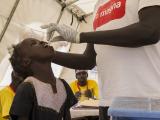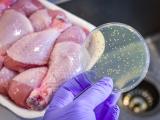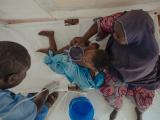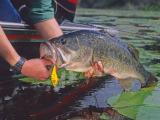Jan 3, 2005 (CIDRAP News) – Canadian authorities have now confirmed a case of bovine spongiform encephalopathy (BSE) in an older dairy cow suspected last week of having the disease.
Canada's second BSE case does not indicate an increased risk for food safety, wrote the Canadian Food Inspection Agency (CFIA) in an announcement yesterday. No part of the animal entered the human or animal food chains, CFIA noted. Canada mandates the removal of high-risk cattle parts, called specified risk materials (SRM) from the human food supply.
The cow was tested because she couldn't walk, qualifying her as a high-risk animal under Canada's BSE surveillance rules. The cow was born in 1996, 1 year before Canada and the US banned the feeding of protein from ruminants to other ruminants.
The announcement of a suspected case occurred as US officials announced plans to lift a ban on importing live Canadian cattle that had been imposed after the discovery of the first BSE case in May 2003. The US Department of Agriculture (USDA) said on Dec 29 that the borders will reopen to cattle younger than 30 months old and to other beef products beginning Mar 7. BSE is only rarely found in cattle younger than 30 months.
Confirmation of a second BSE case doesn't rattle US confidence, according to a statement today by Ron DeHaven, administrator of the US Animal and Plant Health Inspection Service (APHIS).
USDA remains confident that Canada's animal and public health measures, along with US rules "provide the utmost protections to US consumers and livestock," DeHaven said in a news release.
The discovery of a second case is not surprising to those involved in surveillance efforts, CFIA noted, adding that additional cases may be found as testing of high-risk cattle continues. The country tested 22,000 animals in 2004, CFIA said.
World Organization for Animal Health (OIE) rules identify a country as at minimal BSE risk if fewer than two cows for each million cattle older than 24 months are found to be ill during the previous 4 years, the APHIS announcement said. Canada has about 5.5 million cattle in that age range, which would allow for up to 11 BSE cases without jeopardizing its minimal-risk status.
CFIA has identified the home farm of the BSE-infected cow and is searching for any other animals at similar risk. The agency is also tracking offspring of the infected cow and looking into what the infected cow ate early in her life, when infection was most likely to occur.
See also:
Jan 3 USDA response to confirmed case
Dec 30, 2004, CIDRAP News story on suspected case


















